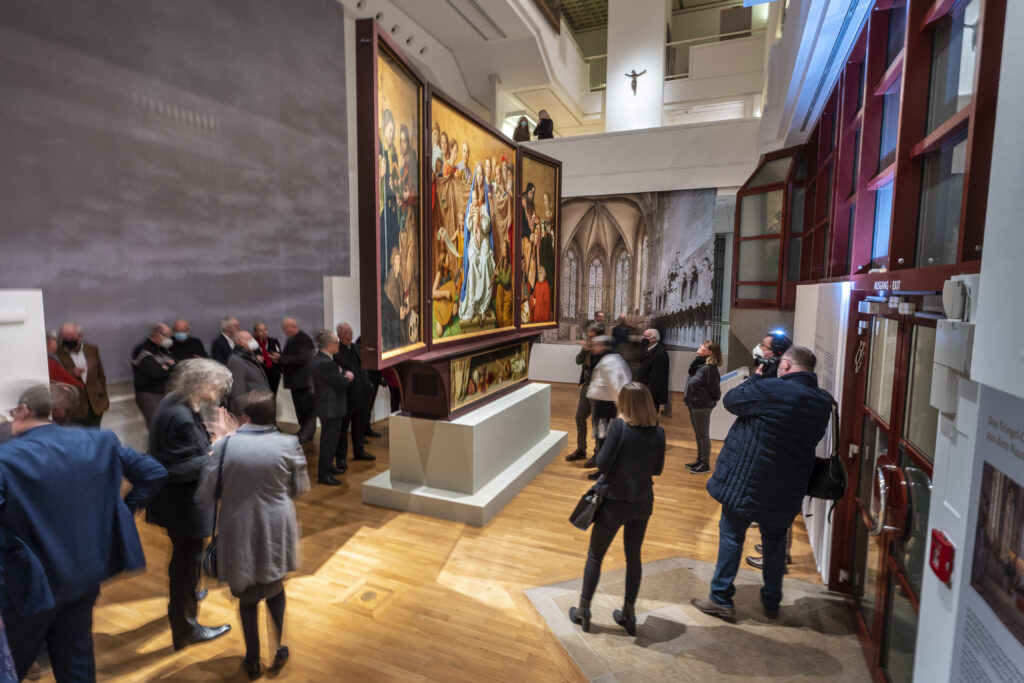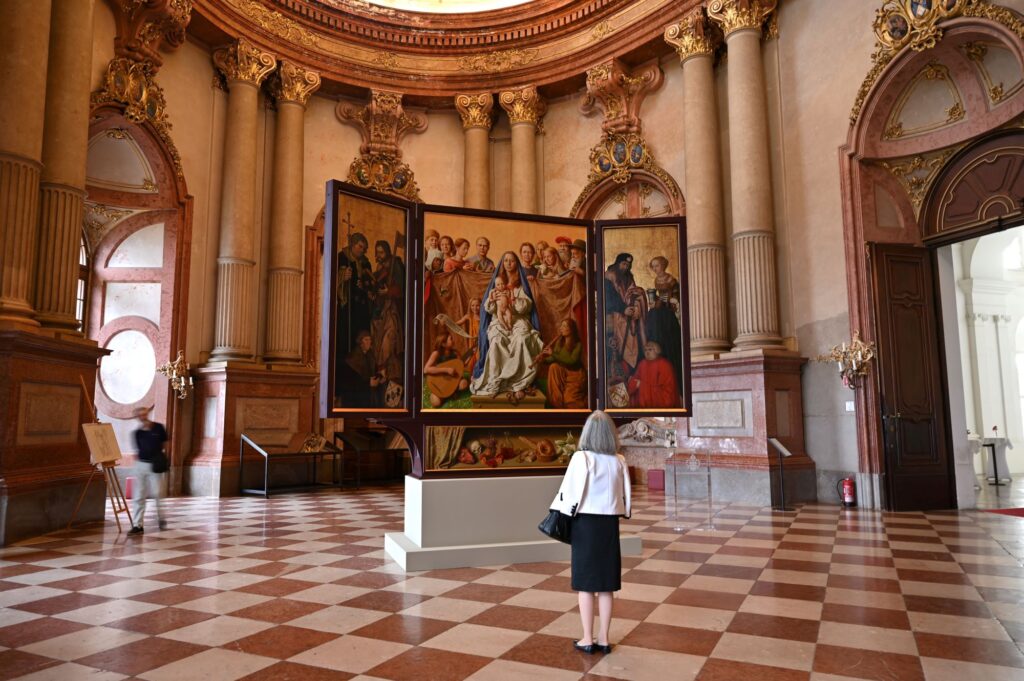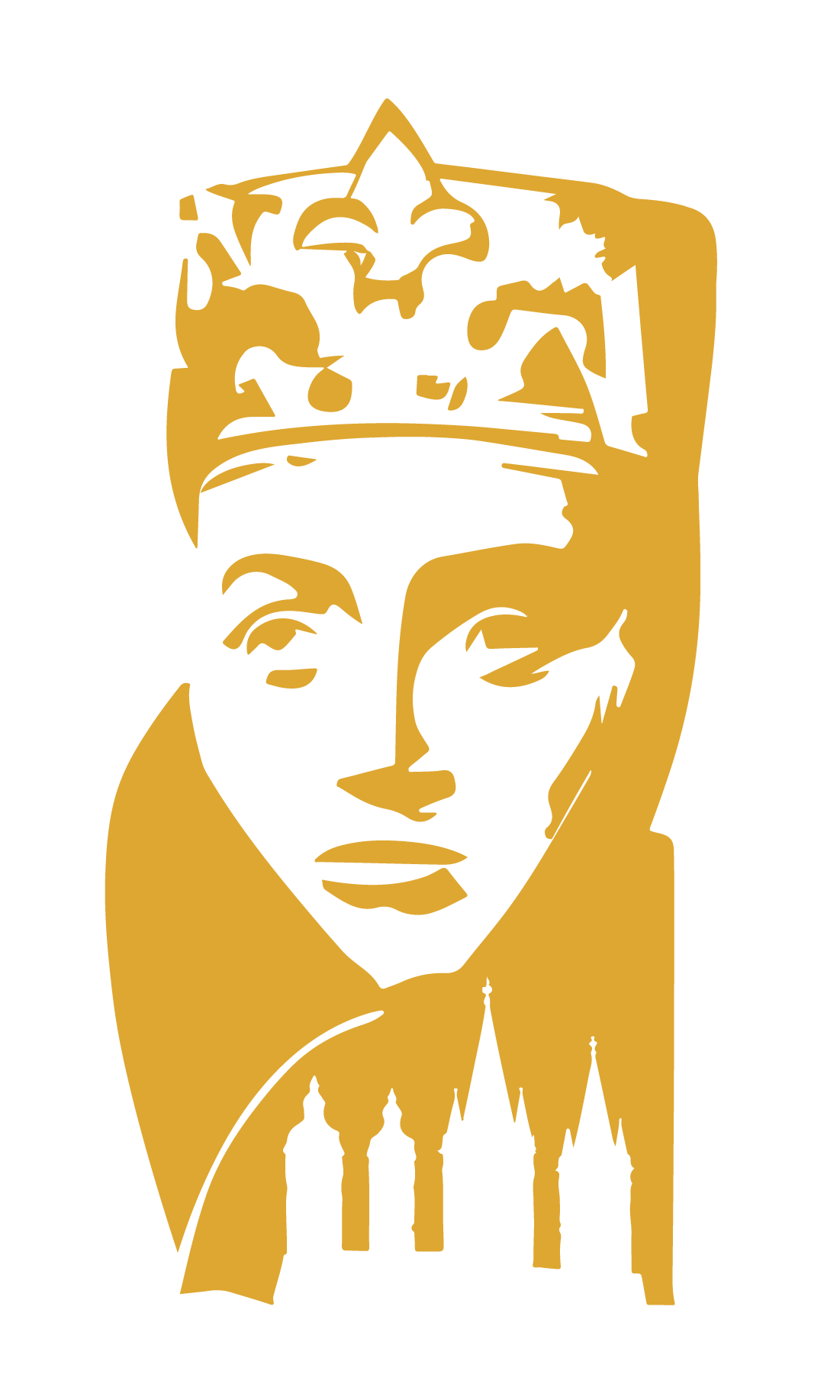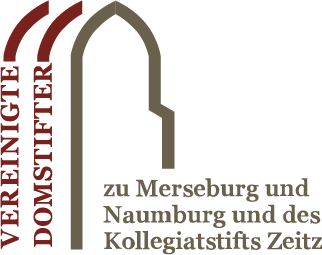After its one-year exhibition tour, the Cranach-Triegel Altarpiece will return to the west choir of Naumburg Cathedral in December 2023. The altar was on display there from its consecration in July 2022 until December 2022, was then shown in the Diocesan Museum in Paderborn until June 2023 and was last on display in Klosterneuburg near Vienna. The artwork delighted visitors at both stops on its journey, as reflected in the feedback from both museums.
The Marian altar in the Paderborn Diocesan Museum (December 2022 to June 2023)
The Paderborn Diocesan Museum was very pleased to temporarily house the much-discussed Cranach-Triegel retable from Naumburg. Being able to present museum guests with such an extraordinary work of art by two great painters was well worth the effort involved in transporting, assembling and dismantling it. The complexity of the themes associated with the retable was made clear during guided tours and lectures. While ICOMOS Germany's objection to the installation of the panels on the altar mensa in Naumburg's west choir was initially in the foreground, the aspect of modern contemporary art in the church interior also increasingly came to the fore during the exhibition in the Diocesan Museum.
In particular, the opportunity to directly compare the paintings of Lucas Cranach and Michael Triegel encouraged visitors to take a closer look. They were interested in the different materials such as colors and supports, but also in the painting style and the conception of the figures. The captivating quality of both Cranach's and Triegel's pictorial compositions and the people depicted had an immediate and fascinating effect on viewers. Visitors' reactions after guided tours were gratifying when their eye for painterly skill, such as the effect of plasticity or the fine differentiation of surfaces such as velvet fabric or skin, was sharpened as a gain in knowledge.
The fact that a contemporary artist has dedicated himself to the Christian subject of a sacra conversazione out of personal conviction has interested and appealed to the audience. An evening event with Michael Triegel was more than fully booked. Presenting contemporary images to people as testimonies of faith met with widespread approval and meets their need for inspiring artistic articulations. The Diocesan Museum, together with the Liborianum Paderborn House of Education, organized the study day "The Cranach-Triegel retable and the question of contemporary art in the church interior" on this topic.
Elisabeth Maas (Archdiocese of Paderborn)
The presentation of the Cranach-Triegel retable was a visitor success for the Paderborn Diocesan Museum. Quotes from the guest book are exemplary proof of this: "Simply fantastic, this Triegel altar! Great sensitive art and a statement of faith!" "It was worth driving 270 km to see Michael Triegel's altar. Art in the best sense: inspiring, exciting. May it be given the right place."

The altar of the Virgin Mary in Klosterneuburg Abbey near Vienna (July 2023 to November 2023)
Naumburg, where is that? Most people in Austria don't know much about the name of this town at first. It's not much better in art-interested circles: you've heard of it, there's this church with the donor figures, but where exactly it is, no idea, somewhere in the east. At least in Klosterneuburg, this has changed after the presentation of the Marienaltar, which lasted several months, and many people have decided to pay a visit to the cathedral city in Saxony-Anhalt in the near future.
The first surprising realization that I was able to gain very quickly: The name Michael Triegel opens doors that otherwise tend to remain closed. This is definitely the case in clerical circles. "Oh, we can exhibit a great work by Michael Triegel. This is a unique opportunity that we shouldn't miss out on." That was the unanimous tenor of all the choirmasters I told about this project. The reference to a special budget required for this was finally acknowledged by our treasurer with the confident sentence: "We will still be able to afford it." So it was clear: Triegel can come. I only realized how complex and technically challenging the construction of this work actually is when steel girders, weights and base parts were carried up in seemingly unlimited quantities and the gantry crane was erected.
It was clear to me from the outset that the Marian altar would work excellently in combination with the baroque architecture of the Marble Hall and the suite of rooms in the imperial apartment. The fact that the Madonna of the altar, placed right in the middle of the hall, already shone out at visitors through the entire sequence of rooms and became more and more present and expressive as they approached, proved to be an additional attraction that could not have been foreseen in this form.
In recent weeks and months, I have been able to give numerous special tours of the altar. Groups have spontaneously come together and booked appointments. Where normally a handful of people can be activated, here I was faced with groups of 18 to 20 people. The Triegel Altar also served as the perfect "crowning" finale to guided tours of our annual exhibition "The Good Works".
What immediately struck everyone, even people who are not so intensively involved with painting, is the masterful technical skill, demonstrated particularly impressively in the two predella paintings. Here, the crumpled shroud on the reverse side in particular aroused the greatest admiration. This was further heightened when the sophisticated symbolism contained in every detail was explained. In addition, everyone who saw the altar immediately sensed that they were confronted by very real people. The reference to family members who modeled for the painter or impressive characters he encountered on his travels reinforced this. The figure of St. Peter with the baseball cap was of course particularly well suited to explaining this artistic approach; no one found it inappropriate. On the contrary: salvation concerns everyone, here, today, now. You can meet biblical figures on the street every day. The message gets through.
The interplay between the old wings and the newly painted central section was admired throughout and discussed in detail from a technical point of view. How did he do the gold ground compared to the techniques available to Lucas Cranach? What exactly does the painting ground look like? These are two of the many questions that were asked. Unfortunately, due to a lack of detailed technical knowledge, I had to leave many questions unanswered during guided tours. The fact that the Cranach wings are in high-tech climate-controlled display cases, which are subsequently covered with wooden strips to make the whole thing look like a large wooden retable, was easy to explain. The surprise effect was guaranteed.
A well-known Viennese art historian, who is also active as an artist at the highest level, told me: "I was rather skeptical when I heard about it, but now I am simply thrilled. With this painterly quality, there's no need to discuss it any further."
There were also critical voices, but they were so few that they were particularly easy to remember.
There were very few visitors who, probably also under the impression of corresponding press reviews, would have liked a decidedly modern formal language, expressionist, abstract or conceptual, in the confrontation with the two Cranach wings. Yes, and in the younger generation, works of art, whether contemporary or centuries old, are immediately scrutinized for their wokeness. A message from a group of students: "The Madonna is blonde and blue-eyed. That's typical again - full cliché: the German virgin!" Incidentally, the young lady who made this comment was blonde herself - and she didn't say how she could imagine it any other way.
Wolfgang Christian Huber (Klosterneuburg Abbey Museum)




 Skip to content
Skip to content